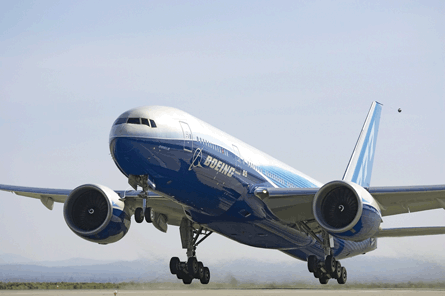Boeing has established product development teams to study the future of its 737 and 777 twinjets. The move follows the revelation by Boeing boss Jim McNerney that the company is allocating additional research and development for upgrades of both aircraft.
Boeing Commercial Airplanes chief executive Jim Albaugh has appointed Mike Bair, current head of business strategy and marketing, and original chief of the 787 programme, to head the 737 team. Lars Anderson, former 777 programme vice-president and general manager, will come out of retirement to lead the 777 team.
 |
|---|
© Boeing |
"Defining Boeing's airplane product strategy is critical to our future growth. We need a clear vision and roadmap for our single-aisle and twin-aisle offerings for the future," says Albaugh. "Also, in the global environment in which we operate, we need a sharpened situational awareness of macro-economic and geopolitical realities."
Boeing says that Anderson and Bair are "charged with working with our employees, customers and suppliers to find the best way to address the market's requirements for single-aisle and large twin-engined, twin-aisle airplanes. All these stakeholders will help determine our future offerings in these segments."
The move marks the public revival of active product conceptualisation and development after nearly a decade dominated by the development of the 787.
Early in the 2000s, Boeing launched Project Yellowstone to replace Boeing's commercial portfolio with three aircraft dubbed Y1, Y2 and Y3. Y1 focused on the 100- to 200-seat market currently served by the 737 and Y3 focused on the 300- to 500-seat market currently occupied by the 747 and 777. Of those three projects, Boeing's Y2 became the 787.
In 2006, Boeing formally created the 737 RS (replacement study) led by Mike Cave, now president of Boeing Capital.
According to then BCA chief Alan Mullaly, the 2006 vision for the replacement study had the aircraft scheduled for service entry between 2012 and 2015. Strong growth in the 737 backlog and costly 787 and 747 delays have pushed entry into service of a 737 replacement back until the middle of the next decade.
McNerney revealed during the recent fourth quarter 2009 earnings call that the company is "actively considering" re-engining the 737 and is working to define the requirements of such a product.
"We're beginning to harden up alternatives, maturing the technologies with the right amount of R&D spending, and have a wedge in our budget to quickly move on both as the market requires," he said.
Additionally, he added that any decision to re-wing the 777 would come after any determination on the 737, tying the pace of such a decision to the firming up of the 350-seat Airbus A350-1000.
Source: Flight International























